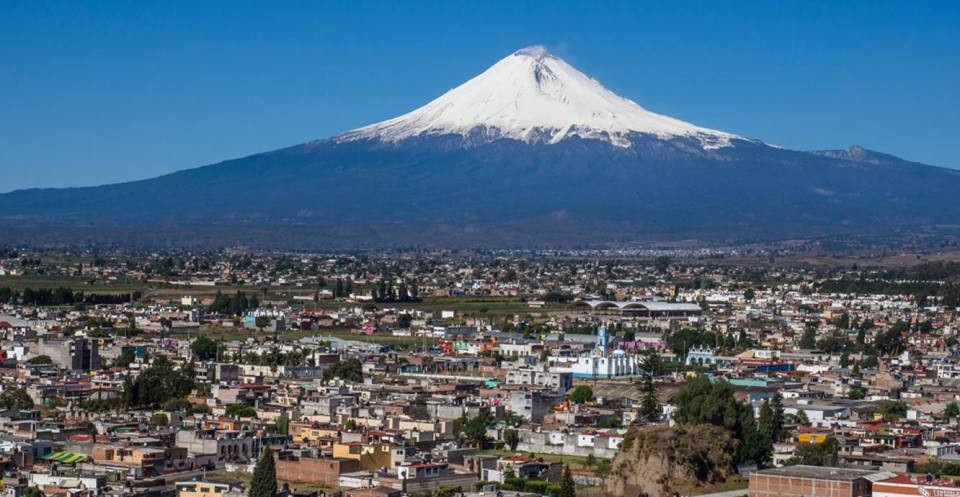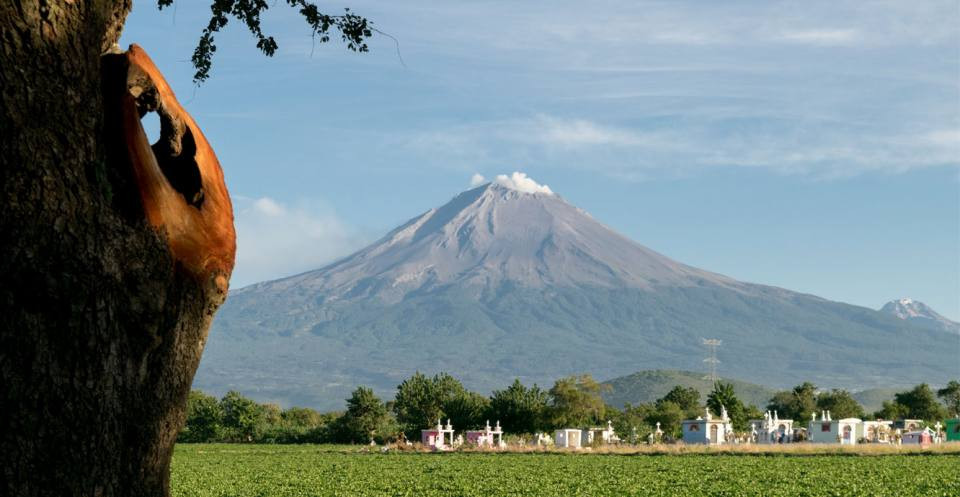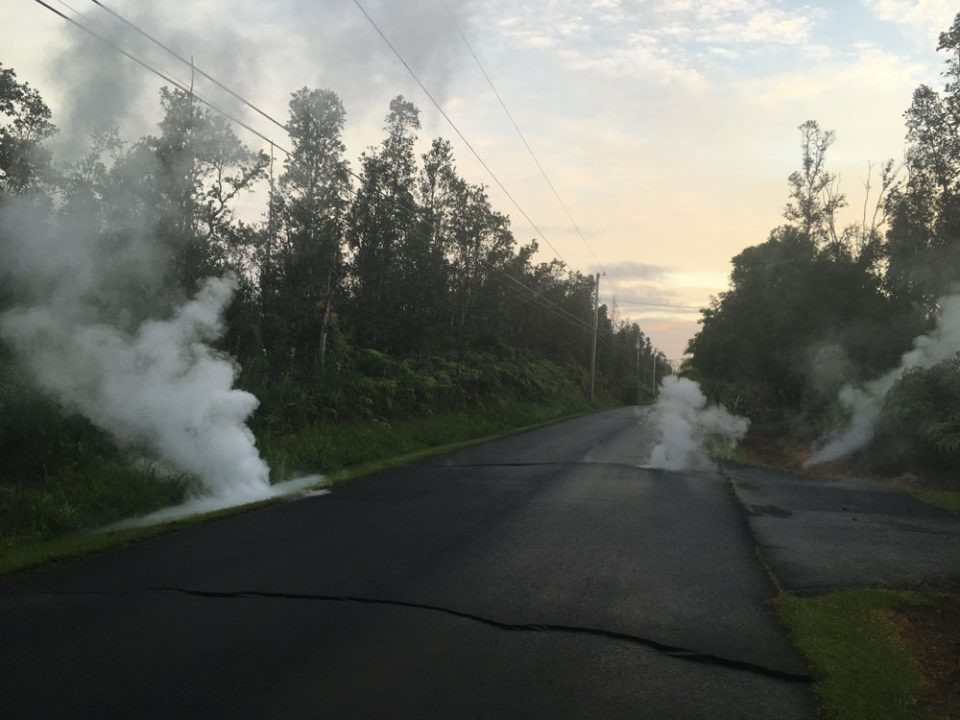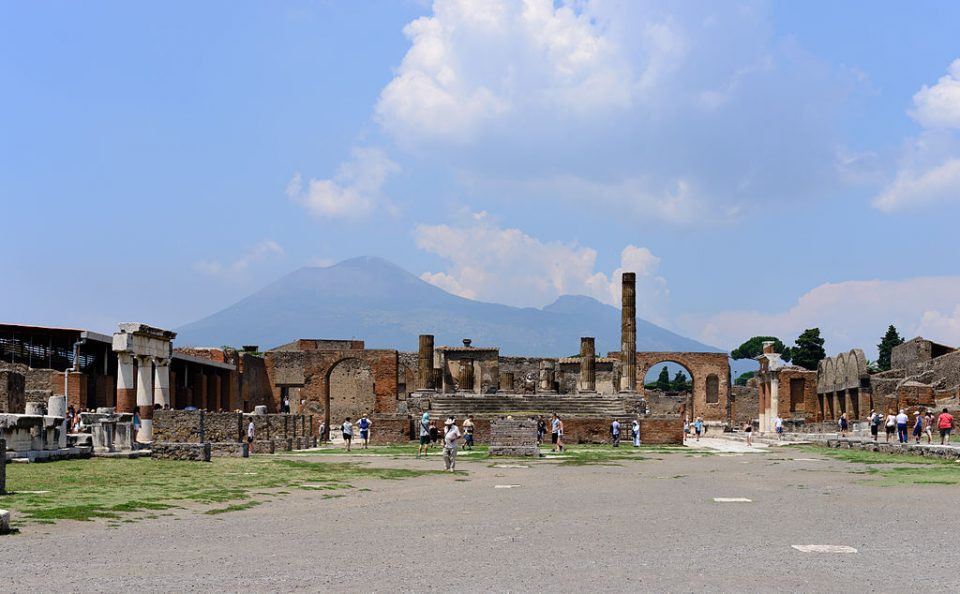Volcanoes And Tourism might seem like an unlikely combination, but these geological powerhouses attract millions of tourists worldwide, significantly boosting local economies. With SIXT.VN, discover the allure of volcanic landscapes across Vietnam and beyond, ensuring a seamless and enriching travel experience. We provide convenient travel solutions, including airport transfers, hotel bookings, and curated tours, which enhance your exploration of these magnificent natural wonders. Whether you’re drawn to the fertile lands, the cultural significance, or the adventure of witnessing these majestic giants, SIXT.VN makes your journey unforgettable. Volcanic tourism and geothermal energy are growing in popularity.
1. What Makes Volcanoes Attractive Tourist Destinations?
Volcanoes are attractive tourist destinations because they offer a unique blend of dramatic landscapes, geological significance, and adventure opportunities. Volcanoes shape the surrounding areas, produce rich soils for agriculture, and harbor valuable mineral resources. Volcano tourism brings significant economic benefits to local communities through increased revenue and job creation. According to research from the Volcanic and Geothermal Tourism Association in 2022, volcanic areas attract millions of visitors annually, generating billions of dollars in revenue for local economies.
1.1. The Allure of Volcanic Landscapes
Volcanoes captivate tourists with their striking landscapes formed by centuries of geological activity. These landscapes include:
- Crater Lakes: Vibrant, mineral-rich lakes filling volcanic craters, such as Crater Lake in Oregon, offer stunning views.
- Lava Fields: Expansive, solidified lava flows create otherworldly terrains, exemplified by the lava fields of Iceland.
- Hot Springs and Geysers: Geothermal features like those in Yellowstone National Park provide a glimpse into the Earth’s internal heat.
These features, combined with the raw power and potential danger of active volcanoes, create an irresistible draw for adventure seekers and nature enthusiasts. The visual spectacle of volcanic activity is a testament to Earth’s power and beauty.
1.2. Geological Significance and Learning Opportunities
Volcanoes provide invaluable insights into Earth’s geological processes, making them significant for educational tourism. Visitors can learn about:
- Plate Tectonics: Understanding how volcanoes form at plate boundaries.
- Volcanic Eruptions: Studying the causes and effects of different types of eruptions.
- Rock Formations: Examining unique volcanic rock formations like basalt columns.
Educational centers and guided tours often enhance these experiences, offering in-depth knowledge from volcanologists and geologists. Places like the Mount St. Helens National Volcanic Monument in the USA offer comprehensive educational programs.
1.3. Adventure Tourism Opportunities
Volcanoes are hubs for adventure tourism, offering activities like:
- Hiking and Climbing: Ascending volcanic peaks provides challenging and rewarding experiences, such as climbing Mount Fuji in Japan.
- Lava Cave Exploration: Exploring underground lava tubes offers a unique perspective on volcanic activity.
- Hot Spring Soaking: Relaxing in naturally heated geothermal waters provides therapeutic benefits.
These adventures cater to a wide range of thrill-seekers, from casual hikers to experienced mountaineers, enhancing the appeal of volcanic regions.
 Aerial view of Mount Bromo's Tengger caldera with active crater spewing white smoke in East Java, Indonesia.
Aerial view of Mount Bromo's Tengger caldera with active crater spewing white smoke in East Java, Indonesia.
2. Which Volcanoes in Vietnam Are Popular Tourist Destinations?
Vietnam is home to several dormant volcanoes that attract tourists with their scenic beauty and cultural significance. Although Vietnam does not have active volcanoes, the central highlands offer incredible landscapes formed by past volcanic activity. The most popular are:
- Basalt Plateaus of the Central Highlands: The basalt plateaus formed by ancient volcanoes provide fertile lands for agriculture and stunning landscapes, attracting eco-tourists and adventure seekers.
- To Nung Lake (Gia Lai Province): This crater lake, formed in a volcanic caldera, is known for its crystal-clear waters and tranquil surroundings, offering a serene escape for nature lovers.
- Ly Son Island (Quang Ngai Province): This island is a volcanic formation with unique rock structures, pristine beaches, and historical sites, attracting tourists interested in geology, culture, and relaxation.
2.1. Basalt Plateaus of The Central Highlands
The Central Highlands of Vietnam are characterized by extensive basalt plateaus formed by ancient volcanic activity. These plateaus are:
- Dak Lak Province: Known for coffee plantations and scenic waterfalls, offering a mix of cultural and natural attractions.
- Gia Lai Province: Home to To Nung Lake and vast rubber plantations, attracting visitors with its tranquil landscapes.
- Lam Dong Province: Featuring cooler climates and flower farms in Da Lat, providing a refreshing retreat from the coastal heat.
These plateaus are not only visually stunning but also economically vital, supporting agriculture and tourism industries.
2.2. To Nung Lake (Gia Lai Province)
To Nung Lake is a beautiful crater lake formed within the caldera of an extinct volcano, providing a serene escape and recreational opportunities. It is known for:
- Clear Waters: The lake’s clarity reflects the surrounding lush greenery, enhancing its visual appeal.
- Tranquil Setting: The peaceful environment is perfect for relaxation and contemplation.
- Recreational Activities: Boating, fishing, and picnicking are popular activities around the lake.
The lake’s natural beauty and peaceful ambiance make it a must-visit destination in the Central Highlands.
2.3. Ly Son Island (Quang Ngai Province)
Ly Son Island is a unique volcanic formation off the coast of Quang Ngai province, offering geological wonders and pristine beaches. It features:
- Volcanic Rock Formations: Unique rock structures and caves created by volcanic activity.
- Beaches: Clear waters and sandy shores ideal for swimming and sunbathing.
- Cultural Sites: Ancient temples and pagodas reflecting the island’s rich history.
The island’s blend of natural beauty, cultural heritage, and geological significance makes it a captivating destination for a variety of tourists.
 Crops flourish in the rich volcanic soil of the Popocatepetl volcano, south of Atlixco, Mexico.
Crops flourish in the rich volcanic soil of the Popocatepetl volcano, south of Atlixco, Mexico.
3. What Are The Economic Benefits Of Volcano Tourism?
Volcano tourism offers substantial economic benefits, including increased revenue, job creation, and local business support. The presence of volcanic landscapes can significantly boost local economies through tourism-related activities. According to the United Nations World Tourism Organization (UNWTO), geotourism, including volcano tourism, contributes significantly to local and regional economies by promoting sustainable development.
3.1. Revenue Generation
Volcano tourism drives revenue through:
- Accommodation: Hotels, guesthouses, and resorts catering to tourists.
- Tours and Activities: Guided tours, adventure activities, and cultural experiences.
- Entrance Fees: Charges for visiting volcanic sites and national parks.
This revenue supports local governments and funds the maintenance and preservation of volcanic areas.
3.2. Job Creation
The tourism industry creates jobs in:
- Hospitality: Hotel staff, restaurant workers, and tour guides.
- Transportation: Drivers, shuttle services, and airport transfers.
- Retail: Souvenir shops, local markets, and craft stores.
These employment opportunities provide income for local communities, reducing unemployment and improving living standards.
3.3. Support for Local Businesses
Volcano tourism supports local businesses by:
- Promoting Local Products: Souvenirs, handicrafts, and regional specialties.
- Supporting Local Restaurants: Showcasing traditional cuisine and local ingredients.
- Encouraging Local Services: Offering opportunities for local guides and transportation providers.
This support strengthens the local economy and preserves cultural traditions, fostering sustainable tourism.
4. What Are The Risks Associated With Volcano Tourism?
Volcano tourism has inherent risks, including eruptions, hazardous gases, unstable terrain, and health concerns, necessitating careful planning and safety measures. Despite their allure, volcanoes pose several risks that tourists must be aware of. According to a study by the International Volcanological Association (IVA), understanding and mitigating these risks is crucial for ensuring safe and sustainable volcano tourism.
4.1. Volcanic Eruptions
The most obvious risk is volcanic eruptions, which can result in:
- Lava Flows: Molten rock that can destroy everything in its path.
- Pyroclastic Flows: Fast-moving currents of hot gas and volcanic matter.
- Ashfall: Fine particles that can disrupt air travel, damage infrastructure, and cause respiratory problems.
Monitoring volcanic activity and adhering to evacuation orders are essential for mitigating these risks.
4.2. Hazardous Gases
Volcanoes emit hazardous gases, such as:
- Sulfur Dioxide (SO2): Causes respiratory irritation and acid rain.
- Carbon Dioxide (CO2): Can accumulate in low-lying areas, leading to asphyxiation.
- Hydrogen Sulfide (H2S): Toxic gas with a characteristic rotten egg smell.
Monitoring gas levels and using appropriate respiratory protection can minimize exposure.
4.3. Unstable Terrain
Volcanic landscapes often feature unstable terrain, including:
- Loose Rocks and Ash: Can cause slips and falls.
- Steep Slopes: Present challenges for hiking and climbing.
- Crevasses and Fissures: Hidden dangers in lava fields and glaciers.
Wearing appropriate footwear and hiring experienced guides can help navigate these terrains safely.
4.4. Health Concerns
Volcano tourism can pose health concerns, such as:
- Respiratory Issues: Exposure to volcanic ash and gases can exacerbate respiratory conditions.
- Altitude Sickness: Common at high-altitude volcanoes.
- Dehydration: Increased risk due to physical activity and hot environments.
Staying hydrated, taking necessary medications, and being aware of personal health limitations are crucial for minimizing these risks.
 A road winds through a verdant landscape, with white gas venting from road cracks near Kilauea volcano in Hawaii.
A road winds through a verdant landscape, with white gas venting from road cracks near Kilauea volcano in Hawaii.
5. What Safety Measures Should Be In Place For Volcano Tourism?
Effective safety measures for volcano tourism include monitoring volcanic activity, establishing evacuation plans, providing visitor education, and enforcing safety regulations. Prioritizing safety is essential for sustainable volcano tourism. According to guidelines from the Geothermal Resources Council (GRC), implementing comprehensive safety protocols is crucial for protecting tourists and local communities.
5.1. Monitoring Volcanic Activity
Continuous monitoring of volcanic activity involves:
- Seismic Monitoring: Detecting changes in earthquake activity.
- Gas Monitoring: Measuring emissions of volcanic gases.
- Deformation Monitoring: Tracking changes in the shape of the volcano.
This data helps scientists assess the risk of eruptions and provide timely warnings.
5.2. Evacuation Plans
Well-defined evacuation plans should include:
- Designated Evacuation Routes: Clearly marked paths to safe areas.
- Emergency Shelters: Safe locations with necessary supplies.
- Communication Systems: Alerting systems for disseminating warnings.
Regular drills and simulations ensure that communities are prepared for potential emergencies.
5.3. Visitor Education
Educating visitors about volcanic hazards and safety measures involves:
- Information Centers: Providing information on volcanic activity and safety guidelines.
- Warning Signs: Clearly marked signs indicating potential hazards.
- Guided Tours: Knowledgeable guides providing safety instructions and hazard awareness.
Informed tourists are more likely to adhere to safety regulations and make responsible decisions.
5.4. Safety Regulations
Enforcing safety regulations includes:
- Restricted Access Zones: Limiting access to high-risk areas.
- Mandatory Equipment: Requiring helmets, masks, and other safety gear.
- Permits and Registrations: Managing visitor numbers and tracking locations.
Consistent enforcement of these regulations ensures that tourists are protected from potential hazards.
6. How Can Tourism Be Managed Sustainably In Volcanic Areas?
Sustainable tourism in volcanic areas involves balancing economic benefits with environmental protection, community involvement, and cultural preservation. Sustainable tourism practices help to ensure the long-term viability of volcano tourism. According to the International Ecotourism Society (TIES), sustainable tourism should minimize environmental impact, respect local cultures, and benefit local communities.
6.1. Environmental Protection
Protecting the environment involves:
- Minimizing Footprint: Reducing the impact of tourism infrastructure and activities.
- Waste Management: Implementing effective waste disposal and recycling programs.
- Conservation Efforts: Supporting the preservation of natural habitats and biodiversity.
These measures help to maintain the ecological integrity of volcanic areas.
6.2. Community Involvement
Engaging local communities involves:
- Creating Economic Opportunities: Providing jobs and business opportunities for local residents.
- Supporting Local Culture: Promoting and preserving local traditions and heritage.
- Community-Based Tourism: Involving local communities in tourism planning and management.
This ensures that tourism benefits local communities and respects their cultural values.
6.3. Cultural Preservation
Preserving cultural heritage involves:
- Protecting Historical Sites: Preserving and restoring cultural landmarks.
- Promoting Local Arts and Crafts: Supporting local artisans and cultural expression.
- Respecting Local Customs: Encouraging tourists to respect local traditions and customs.
This helps to maintain the cultural identity of volcanic communities.
6.4. Economic Viability
Ensuring economic viability involves:
- Diversifying Tourism Products: Offering a range of activities and attractions to attract a broader range of tourists.
- Promoting Off-Season Tourism: Encouraging visitation during less busy times to distribute economic benefits more evenly.
- Investing in Infrastructure: Improving roads, transportation, and other facilities to support tourism.
This ensures that tourism remains a sustainable source of income for local communities.
 Tourists explore the ancient Roman city of Pompeii with Vesuvius in the backdrop.
Tourists explore the ancient Roman city of Pompeii with Vesuvius in the backdrop.
7. How Does SIXT.VN Enhance Volcano Tourism Experiences in Vietnam?
SIXT.VN enhances volcano tourism experiences in Vietnam by providing convenient travel solutions, reliable transportation, comfortable accommodations, and expert local insights. With SIXT.VN, exploring the volcanic landscapes of Vietnam is seamless and stress-free. According to customer testimonials, SIXT.VN’s services have significantly improved the travel experiences of tourists visiting the Central Highlands and Ly Son Island.
7.1. Convenient Travel Solutions
SIXT.VN offers:
- Airport Transfers: Hassle-free transportation from airports to hotels.
- Car Rentals: Wide range of vehicles for exploring volcanic regions at your own pace.
- Customized Tours: Tailored itineraries to suit your interests and preferences.
These solutions ensure that tourists can easily access and explore volcanic destinations.
7.2. Reliable Transportation
SIXT.VN provides:
- Well-Maintained Vehicles: Ensuring safety and comfort during travel.
- Professional Drivers: Knowledgeable and experienced drivers for guided tours.
- 24/7 Customer Support: Assistance and support whenever you need it.
This reliable transportation allows tourists to navigate challenging terrains with confidence.
7.3. Comfortable Accommodations
SIXT.VN offers:
- Hotel Bookings: Wide selection of hotels and resorts to suit your budget and preferences.
- Strategic Locations: Accommodations near volcanic sites for easy access.
- Exclusive Deals: Special offers and discounts for SIXT.VN customers.
This ensures that tourists have a comfortable and relaxing stay during their volcano adventures.
7.4. Expert Local Insights
SIXT.VN provides:
- Local Guides: Knowledgeable guides who share insights about volcanic geology and local culture.
- Insider Tips: Recommendations for the best attractions, restaurants, and activities.
- Cultural Experiences: Opportunities to engage with local communities and traditions.
This enhances the overall travel experience and provides a deeper understanding of volcanic regions.
8. What Are The Cultural And Historical Aspects Of Volcano Tourism?
Volcano tourism often intersects with rich cultural and historical aspects, including ancient legends, traditional practices, and historical sites related to volcanic activity. Volcanoes have played significant roles in shaping human history and culture. According to UNESCO, many volcanic landscapes are recognized as World Heritage Sites due to their cultural and historical significance.
8.1. Ancient Legends And Mythology
Volcanoes feature prominently in many cultures’ mythology and folklore, such as:
- Mount Olympus (Greece): The mythical home of the gods in Greek mythology.
- Mount Fuji (Japan): A sacred symbol of Japan and a source of artistic inspiration.
- Hawaiian Volcano Goddess Pele: The deity associated with volcanic activity and creation.
These legends add a layer of mystique and reverence to volcano tourism.
8.2. Traditional Practices
Volcanic regions often host traditional practices, including:
- Geothermal Cooking: Using volcanic heat to cook food in places like Iceland and New Zealand.
- Hot Spring Bathing: Ritual bathing in geothermal waters for therapeutic and spiritual purposes.
- Volcanic Festivals: Celebrations honoring volcanic deities and natural forces.
These practices offer unique cultural experiences for tourists.
8.3. Historical Sites
Volcanic areas often contain historical sites related to volcanic events, such as:
- Pompeii and Herculaneum (Italy): Ancient Roman cities preserved by the eruption of Mount Vesuvius.
- Mount Tambora (Indonesia): The site of the largest volcanic eruption in recorded history, which impacted global climate.
- Mount Unzen (Japan): A site of pilgrimage and historical significance due to its volcanic activity.
These sites offer insights into the impact of volcanoes on human civilization.
9. What Innovations Are Shaping The Future Of Volcano Tourism?
Innovations in volcano tourism include virtual reality experiences, enhanced monitoring systems, and sustainable tourism practices, enhancing safety and visitor engagement. Technology and sustainable practices are transforming the volcano tourism industry. According to a report by the World Economic Forum (WEF), these innovations are crucial for creating resilient and responsible tourism experiences.
9.1. Virtual Reality Experiences
Virtual reality (VR) technology offers:
- Simulated Eruptions: Experiencing volcanic eruptions in a safe and controlled environment.
- Exploration of Inaccessible Areas: Exploring lava caves and volcanic craters without physical risk.
- Educational Simulations: Learning about volcanic processes through interactive simulations.
VR provides immersive and educational experiences for tourists.
9.2. Enhanced Monitoring Systems
Advanced monitoring systems include:
- Real-Time Data: Providing up-to-date information on volcanic activity.
- Predictive Modeling: Using data analytics to forecast potential eruptions.
- Early Warning Systems: Alerting tourists and local communities of impending hazards.
These systems improve safety and risk management in volcanic areas.
9.3. Sustainable Tourism Practices
Sustainable practices include:
- Eco-Friendly Infrastructure: Developing sustainable accommodations and transportation.
- Community-Based Tourism: Involving local communities in tourism planning and management.
- Responsible Waste Management: Reducing waste and promoting recycling in volcanic areas.
These practices ensure that tourism benefits both the environment and local communities.
10. How Can I Plan A Safe and Enjoyable Volcano Tourism Trip With SIXT.VN?
Planning a safe and enjoyable volcano tourism trip with SIXT.VN involves researching destinations, booking accommodations and transportation, understanding safety guidelines, and respecting local customs. With SIXT.VN, you can ensure a seamless and unforgettable volcano adventure. According to travel experts, proper planning and preparation are essential for a safe and enjoyable volcano tourism experience.
10.1. Researching Destinations
Start by:
- Identifying Volcanic Areas: Explore destinations with volcanic landscapes, such as the Central Highlands in Vietnam or Ly Son Island.
- Checking Travel Advisories: Stay informed about any travel warnings or restrictions.
- Learning About Volcanic Activity: Understand the current activity level of the volcanoes you plan to visit.
This research will help you choose the right destination and prepare for potential risks.
10.2. Booking Accommodations and Transportation
Use SIXT.VN to:
- Book Hotels: Find accommodations near volcanic sites that suit your budget and preferences.
- Arrange Airport Transfers: Ensure hassle-free transportation from the airport to your hotel.
- Rent a Car: Explore volcanic regions at your own pace with a reliable rental car.
Booking in advance will ensure a smooth and comfortable travel experience.
10.3. Understanding Safety Guidelines
Before your trip:
- Read Safety Information: Familiarize yourself with safety guidelines provided by local authorities and tourism operators.
- Pack Essential Gear: Bring appropriate clothing, footwear, and safety equipment, such as masks and helmets.
- Know Emergency Procedures: Understand evacuation routes and emergency contact information.
Following safety guidelines will help you minimize risks and stay safe during your volcano adventure.
10.4. Respecting Local Customs
While traveling:
- Learn About Local Culture: Understand and respect local customs and traditions.
- Support Local Businesses: Shop at local markets and dine at local restaurants to support the community.
- Follow Ethical Travel Practices: Be mindful of your impact on the environment and local communities.
Respecting local customs will enhance your travel experience and contribute to sustainable tourism.
Planning your volcano tourism adventure with SIXT.VN ensures a safe, enjoyable, and enriching experience. From reliable transportation and comfortable accommodations to expert local insights, SIXT.VN provides everything you need to explore the wonders of volcanoes responsibly.
Ready to explore the breathtaking volcanoes and volcanic landscapes of Vietnam? SIXT.VN offers comprehensive travel solutions, including airport transfers, hotel bookings, and expertly curated tours, ensuring a seamless and unforgettable experience. Don’t let the challenges of planning your trip hold you back. Visit SIXT.VN today to discover our exclusive volcano tourism packages and start your adventure!
Address: 260 Cau Giay, Hanoi, Vietnam. Hotline/Whatsapp: +84 986 244 358. Website: SIXT.VN.
FAQ About Volcano Tourism
- What is volcano tourism?
Volcano tourism involves visiting volcanic landscapes and related attractions for recreational, educational, or adventure purposes. - Are volcanoes safe to visit?
Safety depends on the volcano’s activity level and adherence to safety guidelines. Monitored volcanoes with established safety measures can be relatively safe to visit. - What should I wear when visiting a volcano?
Wear sturdy shoes, long pants, and a long-sleeved shirt to protect against rough terrain and potential hazards. A hat, sunglasses, and sunscreen are also recommended. - What are the best times to visit volcanic areas in Vietnam?
The best time to visit volcanic areas in Vietnam is during the dry season (November to April) for favorable weather conditions. - Can I hike on a volcano?
Hiking is possible on many volcanoes, but it’s essential to check local regulations and hire experienced guides for safety. - What are the health risks associated with volcano tourism?
Health risks include respiratory issues from volcanic gases and ash, altitude sickness, and dehydration. - How can I minimize my environmental impact when visiting volcanic areas?
Stay on marked trails, dispose of waste properly, and support eco-friendly tourism operators. - What cultural experiences can I expect in volcanic regions?
Expect to encounter unique traditions, ancient legends, and historical sites related to volcanic activity. - What innovations are improving volcano tourism?
Innovations include virtual reality experiences, enhanced monitoring systems, and sustainable tourism practices. - How does SIXT.VN ensure a safe volcano tourism experience?
SIXT.VN provides reliable transportation, comfortable accommodations, and expert local insights to ensure a safe and enjoyable trip.



